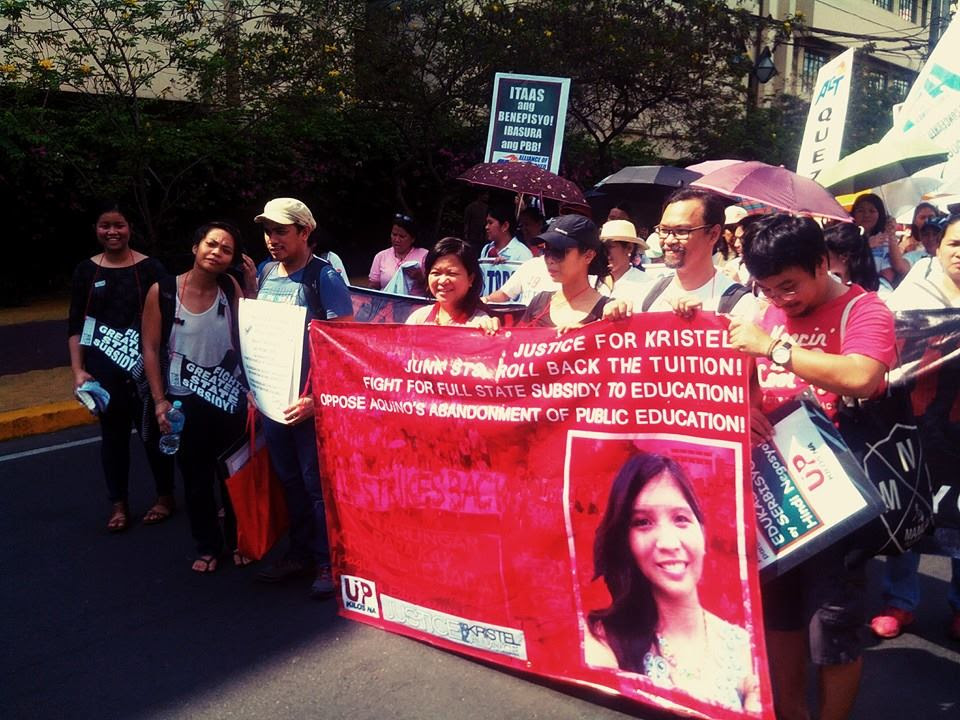Thirty years after the Ninoy Aquino assassination
This generation was not even born when Ninoy Aquino was assassinated and the subsequent events that followed made Philippine history. Ninoy’s familiar bespectacled face is on the 500-peso bill. The tarmac of the airport where he was killed has since been renamed to honor his memory. Yet, there is no telling whether younger Filipinos have a clear understanding why he has been given recognition, a place of honor and respect, and why every August 21st, ceremonies are being performed to remember him. Do the young ones even know how and why he is considered a hero of the Filipino people and why we owe him much?
Commemorating August 21, 1983
Ninoy Aquino Day is a non-working holiday that was signed into law by former President Gloria Macapagal-Arroyo in 2004 through RA 9256. Every year since, the country engages in a national celebration of NinoyAquino’s martyrdom. On August 21, 2013, the Philippines will mark the30th year of the Ninoy assassination.
This year, as the anniversary approaches many are embarking on an academic reflection and critical review of the Benigno Aquino assassination, which eventually led to the 1986 People Power Revolution. Other groups are commemorating the upcoming 30th anniversary very differently. A docu-musical called “Pamana” has been organized by the Ninoy& Cory Aquino Foundation, Inc. (NCAF) in cooperation with the Philippine Educational Theater Association, Inc. (PETA) and Indie.go Media. This is perhaps an attempt to inform and educate younger Filipinos on Ninoy’s legacy through a medium that they will understand.
Unresolved
Aquino was 50 years old when he was killed. He was returning from the US when he was shot in the head. His protective detail was assigned by the Marcos administration. The initial investigation of his death did not produce any definitive results. When democracy was restored after the EDSA Revolution, a new investigation sentenced 16 soldiers to life. The three judges required the guilty to pay a fine to the family of the late senator. The 16 were also blamed for the death of Rolando Galman who was pinpointed as Aquino’s assassin. Galman also fell dead on the MIA tarmac, shot in the head like Ninoy. The verdict was given in 1990. The trial took more than three years. The 16 convicted men repeatedly appealed the double-murder case.
At this time, all the convicted have released (the last in 2009); those who were still alive at least since some died during incarceration. Many Filipinos still consider the Aquino case an unsolved crime, an urban legend even if you’ll pay attention to the terms that get results in Google searches. That particular trial of the century is already a century old.
Conspiracy
For some, the question on whether who is the mastermind of the assassination remains an open one. Although the greater majority goes by the belief that there is no reason to doubt that the Marcoses were behind the assassination. Nevertheless, the dominant thought is that the 19 soldiers who have been convicted of the crime were mere pawns in a conspiracy theory that involved various branches of the Marcos government.
People who were there at that time who read the dailies, listened to the radio, and talked about it whenever they gathered together may have already forgotten how important it was to talk about it. If Ninoy’s legacy is to be kept alive, people who were there need to spread the word to those are too young to care lest the 30th anniversary just comes and goes and nothing else comes of it but ceremony.
Ninoy’s legacy
Ninoy Aquino came from a prominent family. He was the wonder boy of Philippine politics and also recognized as an outstanding senator during his term by the Philippine Free Press. He figured in the political scene of his day with his unabashed and persistent criticism of the Marcos regime. Aquino also called attention to the extravagance of then Philippine First Lady Imelda Marcos.
When martial law was declared on September 21, 1972, a number of people were immediately arrested, including Ninoy Aquino himself, apparently for subversion. While imprisoned, he went on a hunger strike, which he continued for 40 days. Aquino remained in prison until he was sentenced guilty of charges set against him. He was sentenced to die by firing squad. A heart problem prompted him to go to the United States where he sought medical attention. While there he also gave speeches and attended freedom rallies. In 1983 he decided to return to his country at the risk of facing imprisonment and threat of death in order to speak to the ailing President Marcos on reinstituting democratic rule. He failed in his attempt to restore democracy. He never even had a chance.
The deeds of one man
Ninoy Aquino’s assassination caused a ripple of change in Philippine politics. There was mourning and outrage, but there was also the realization that something was quite wrong. What followed was the inevitable need to make things better. Things got better indeed, but after a while the old problems cropped up. One life can indeed change the world, but it’s quite difficult for that one man to change each and every citizen of his country.
Ninoy succeeded in his attempt to bring the country to a democratic state even if it cost him his life. But those who came after him somehow did not fully get the meaning of this. The lessons were learned, but as time went by the desires of the few were placed before the needs of the majority.
President Benigno Aquino III has repeatedly lauded his father’s extraordinary deeds and example. He is currently dealing with problems that his father did not have to worry about. His father’s example of selflessness in particular might need to be inculcated in all three branches of his government. No one is asking them to give their lives for the Filipino people, but they could, at the very least, perform their jobs well with a little more integrity.
August 21, 2013 marks the 30th year since then Senator Benigno “Ninoy” Aquino, Jr. was assassinated. On this occasion, the people who have pledged to serve the Filipino people should revisit his life and abide by his example.




